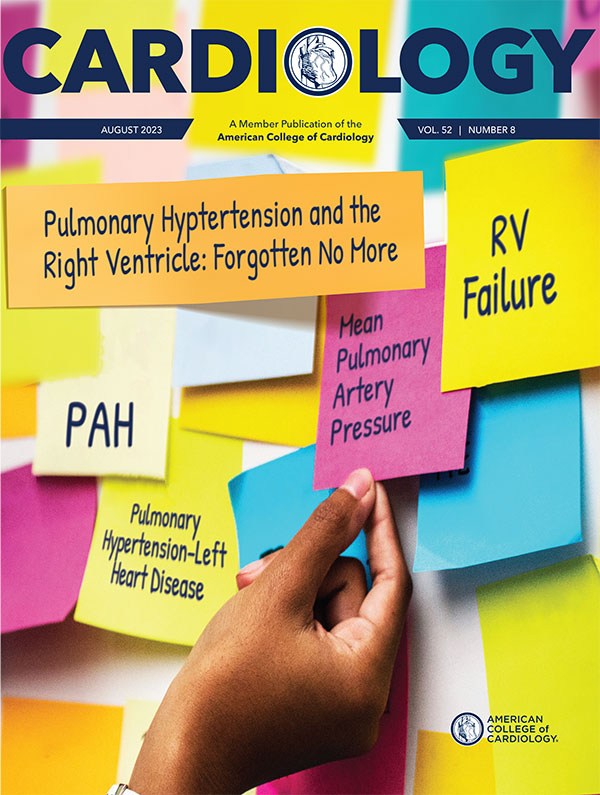Feature | A Giant Leap For Digital Health, Remote Monitoring
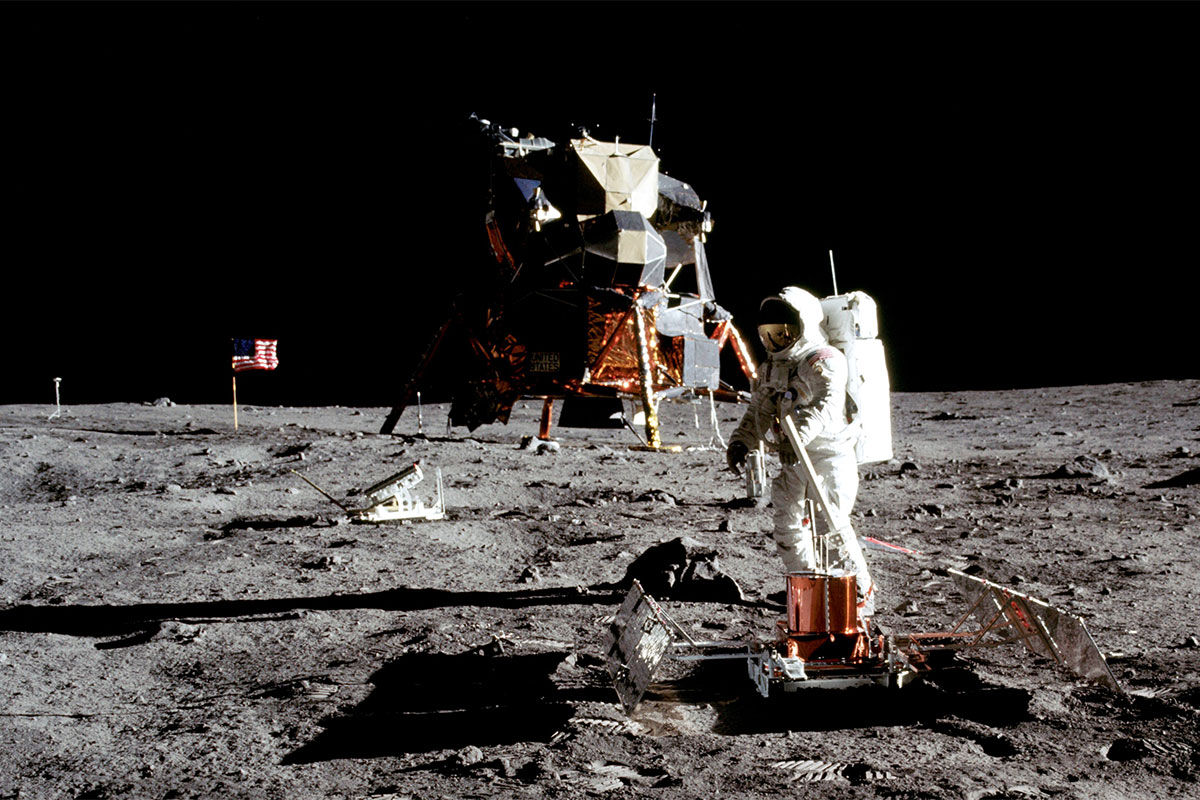
Six decades before wearable technologies like fitness trackers made remote and constant monitoring of vital signs readily available to essentially everyone, medical scientists played a pivotal role in President John F. Kennedy's challenge to land astronauts on the Moon by bringing "biotelemetry" into existence.
As a result of that collective effort, we now know Neil Armstrong's heart rate was 150 beats per minute the moment he made history stepping onto the Moon's surface in July 1969 – three times – three times his baseline heart rate and about 80% of the estimated maximum heart rate for his age (Figure 1).
Needs-driven innovation is not a novel concept in med-tech, nor is it limited to the civilian health care system. In fact, the development of many technologies commonly used in clinical practice nowadays is rooted in work in nonmedical industries years ago.
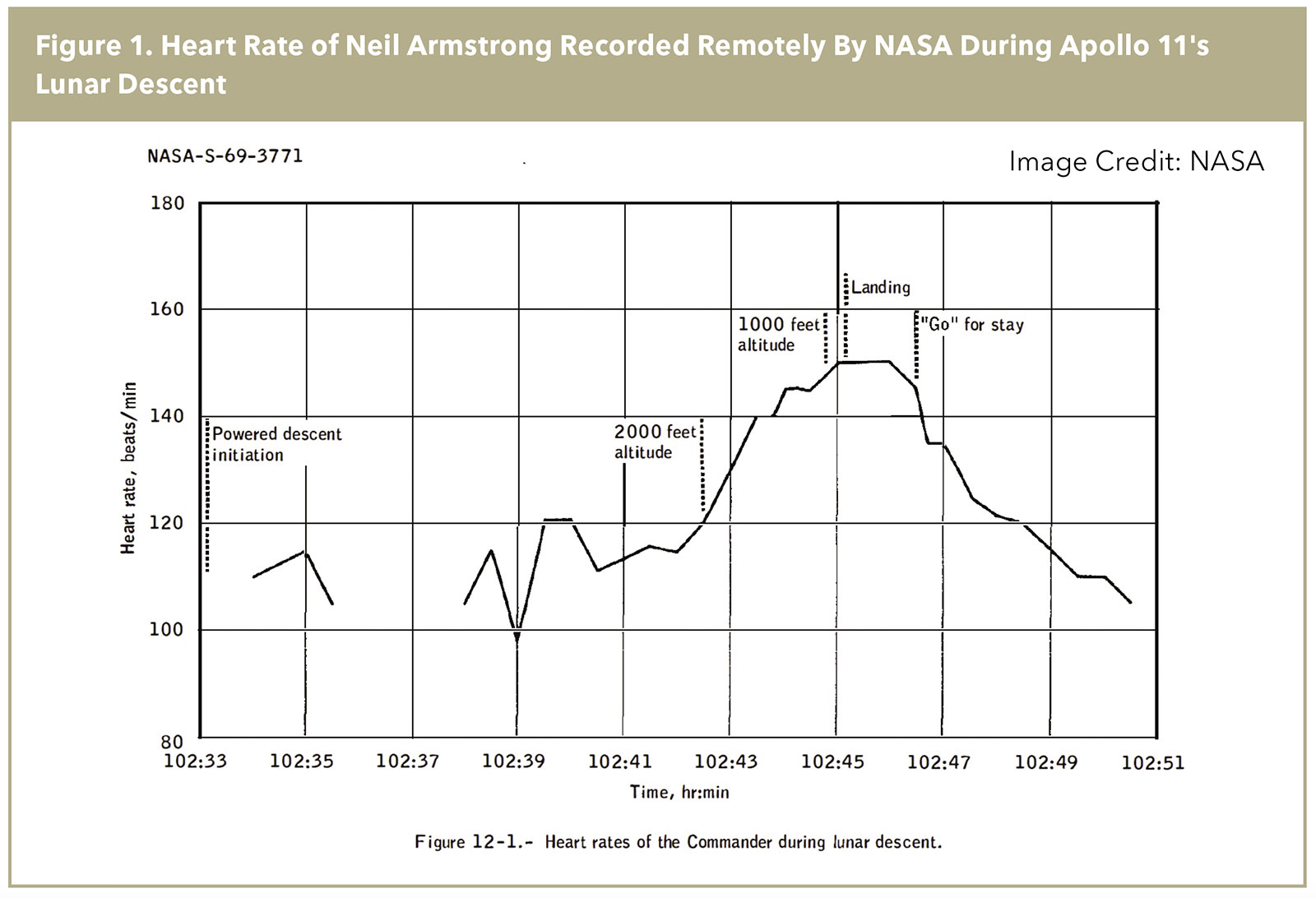
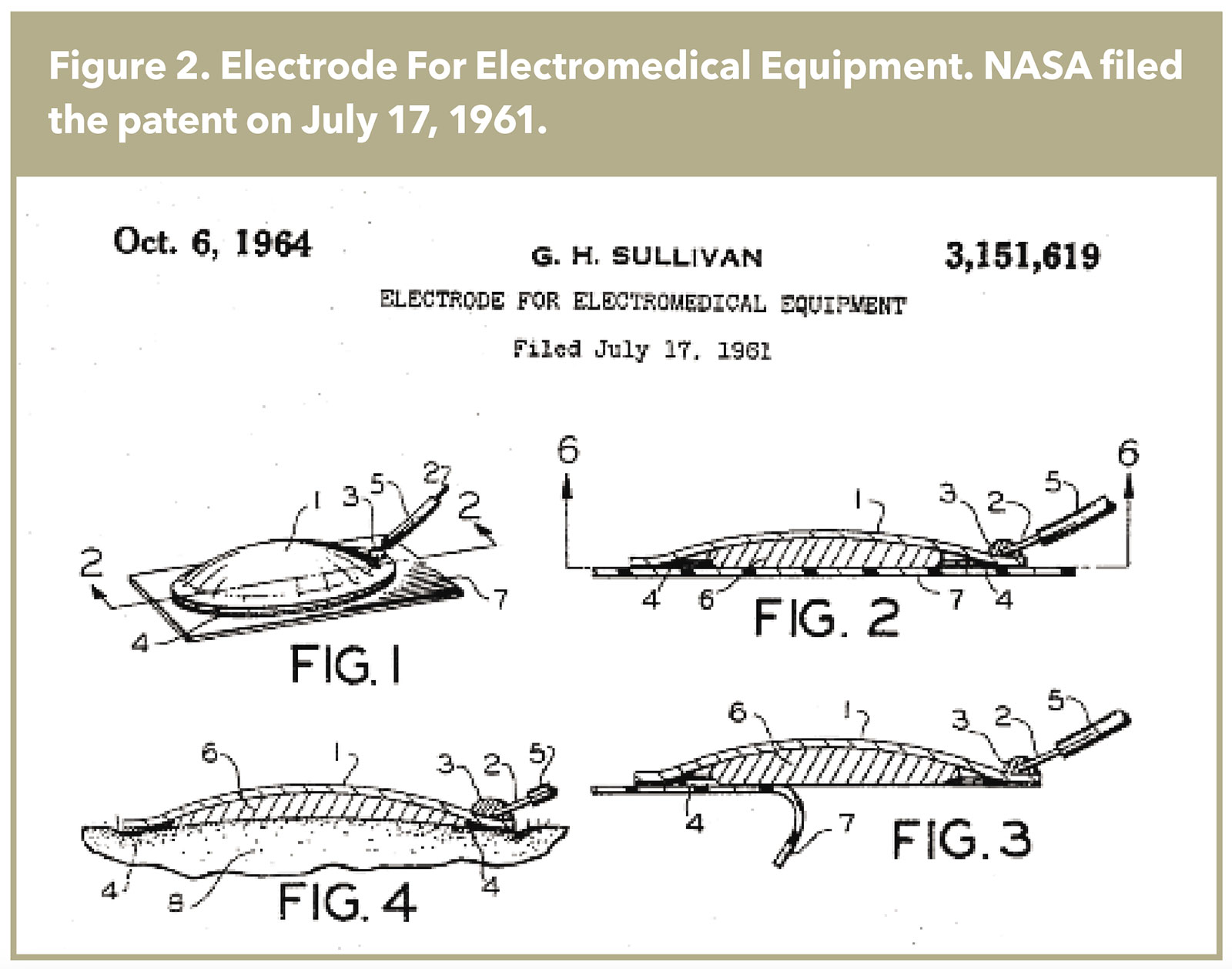
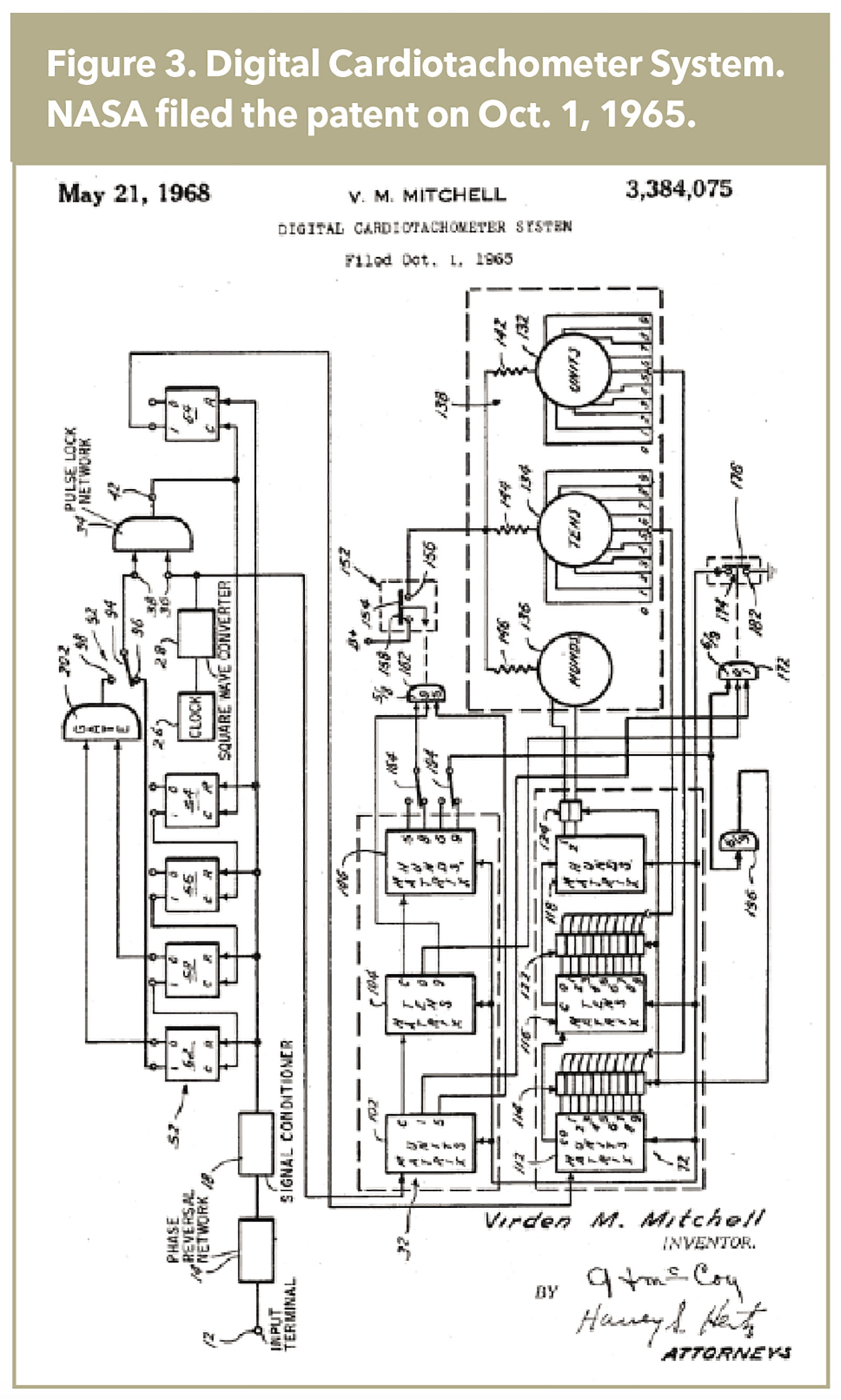
For instance, Spacelabs Medical Company (now known as Spacelabs Healthcare) was founded back in 1958, the same year NASA was officially established, to develop telemetry systems for monitoring vital signs of Air Force pilots and later NASA astronauts during the early space race era.
In its first three years, Spacelabs filed several patents for innovative intellectual properties that can be traced to devices used today. These include an "electrode for electromedical equipment" (Figure 2) filed just a few months before biophysicist Norman Holter, PhD, well known for his Holter monitoring system, published his stellar paper in 1961 in Science, stating that "continuous electrocardiography of active subjects over long periods is now practical.
Spacelabs' "wireless vital signs monitoring system" was part of the historic Gemini IV flight in June 1965 – and provided real-time monitoring of the vital signs of astronaut Edward H. White II from the Mission Control Center in Houston when he became the first American to walk in space. This milestone was followed by NASA filing a patent for the digital cardiotachometer system a few months later (Figure 3).
In 1966, Spacelab introduced its biotelemetry solution to civilian medical facilities and was able to release a range of bedside and multi-patient central station monitors one year before Neil Armstrong stepped onto the Moon wearing the telemetry system and whispering "one giant leap for mankind."
Biotelemetry has been an indispensable part of space missions since their inception and on some occasions has detected potentially life-threatening conditions. For instance, during the final stages of the Apollo 15 mission in 1971 and before the lunar module blasted off the lunar surface, the Mission Control Center on Earth saw that Astronaut James Irwin began to have atrial bigeminy on his EKG (Figure 4).
What's next? A return to the lunar surface after several decades through NASA's Artemis mission. The goal this time is to colonize the Moon and build a satellite station to run drills and test the technologies that will eventually be used for the Mars landing mission in coming years.
Astronauts will stay on the Moon for a much longer period, during which more durable and accurate remote health monitoring technologies will be needed to keep them healthy and functional throughout the missions. In fact, recently four scientists began to live in a Mars-like simulation at the Johnson Space Center. And, commercial space tourism, now a reality, provides another golden opportunity for the health care industry to innovate, test and evolve remote monitoring capabilities.
Back on Earth, the telehealth industry is booming, invigorated by the COVID-19 pandemic and health care stakeholders recognizing the sizable role for digital health and remote patient monitoring (RPM), including facilitating outpatient visits, offloading clinic office schedules, and reducing readmission rates, particularly at busy medical centers. Virtual visits now have become an inseparable part of daily clinical practice.
However, a shortcoming of virtual visits is the inability to conduct a thorough physical exam, which is crucial to building a correct list of differential diagnoses, making the final or working diagnosis, and assessing a patient's response to different treatments.
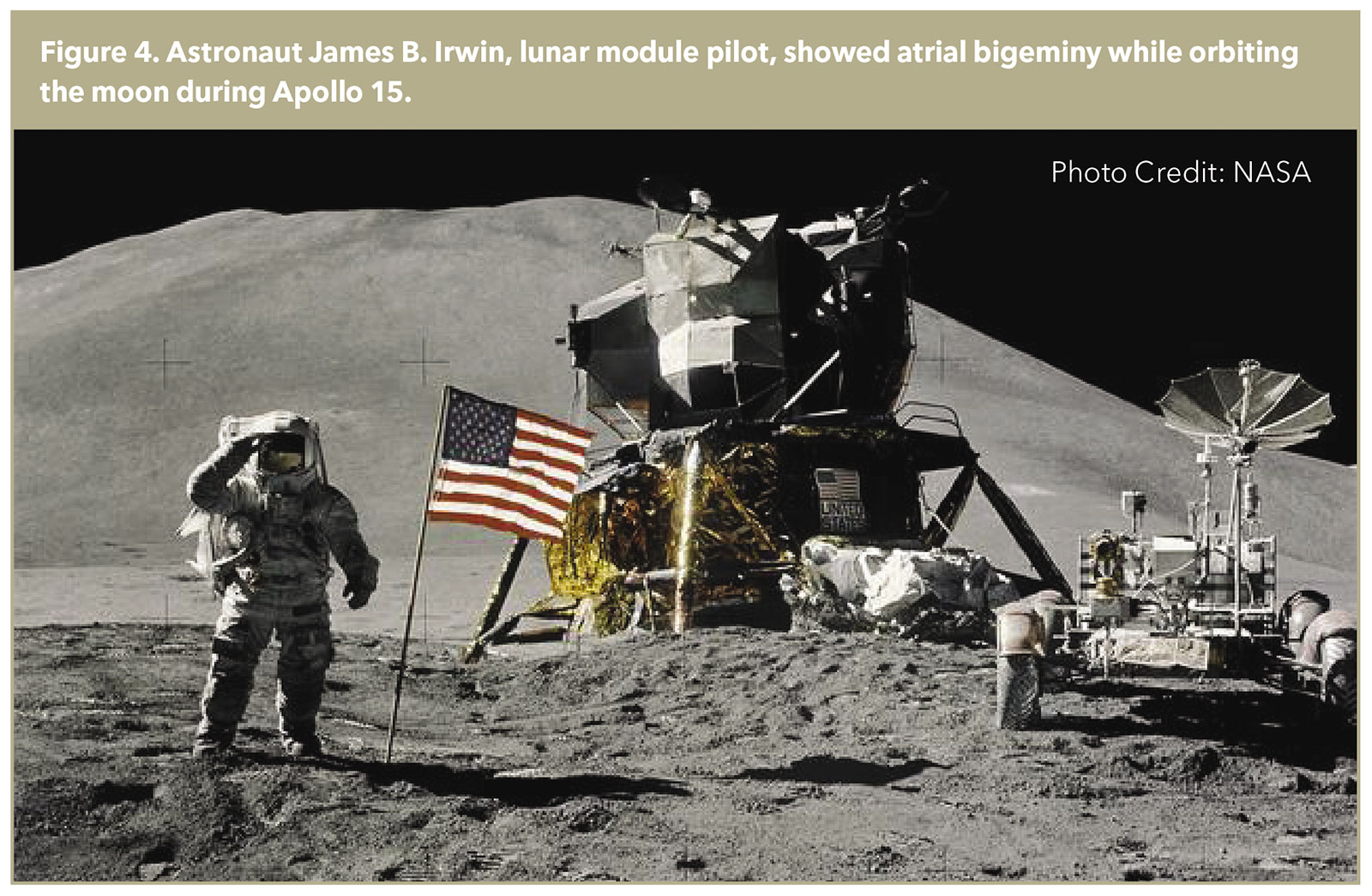
Although clinicians have become more and more dependent on paraclinical information such as lab results and medical imaging over the past few decades, the physical exam remains a pillar of the patient visit and making the right diagnosis, especially during the first clinical encounters with a patient.
RPM technologies have the potential to address this unmet need in digital health and telemedicine, complementing virtual visits with objective health metrics and monitoring patients between clinical encounters. They are already being used to check patients' vital signs like heart rate, respiratory rate, temperature and even exercise metrics remotely.
Making Space for POCUS
With the growing availability of handheld probes, point of care ultrasound (POCUS) shows promise as a valuable tool for quick and efficient bedside assessment for several cardiovascular conditions. ACC's new POCUS Workbook provides pragmatic guidance and best practices for using POCUS in cardiovascular clinical practice. Click here to learn more and download the workbook.
Click here to read about the impact of space travel on the heart from the Cardiology archive.
Moreover, modern implantable devices will be equipped with state-of-the-art sensors that can continuously update cardiologists on their patients' hemodynamics, heart rhythm and functional capacity. Additionally, artificial- or augmented-intelligence (AI) solutions are being developed to screen the large volume of data generated by RPM technologies and flag concerning signs to save clinicians' time and allow for speedier therapeutic adjustments.
AI also has been utilized to interpret subjective patient information to identify those at higher risk for life-threatening events like heart failure decompensation or hospital admission. Automatic interpretation of imaging data, from simple point-of-care ultrasound to the latest generations of MRI, CT and nuclear imaging, has been another fertile ground in which AI has developed over recent years.

The intertwined journey of space exploration and digital health has brought us to a new frontier of possibilities. From the early days of biotelemetry in space missions to the current advancements in remote monitoring and AI, the marriage of technology and medicine continues to push boundaries. Yet, RPM and AI technologies have a long way to go to prove themselves as a mature and reliable clinical tool with gold-standard capabilities.
Future space adventures like the Artemis mission, modern orbital and lunar space stations, and eventually new Mars exploration programs will serve as a testing ground for these futuristic technologies. But there's even more for health care in this.
Just as with the Gemini and Apollo Moon exploration missions, the solutions developed and launched to ensure the health of future astronauts, commercial crews and space tourists could find their way into routine medical practices sooner than we anticipate… or even dream of!
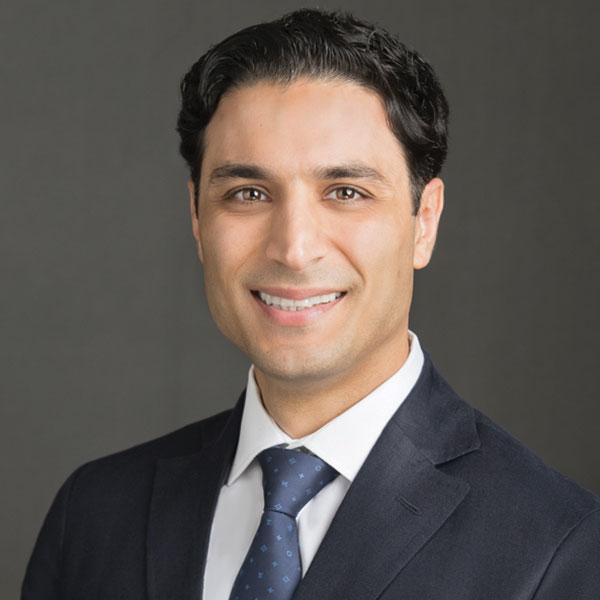
This article was authored by Sam Chitsaz, MD, FACC, an interventional cardiologist at Sutter Health and John Muir Health in the San Francisco Bay Area. He's a member of the ACC Innovation Member Section, and a former innovation fellow in partnership with the Cardiovascular Research Foundation. Reach out to him at @SamChitsaz or at linkedin.com/in/samchitsaz. He acknowledges the expert review by Michael W. Bungo, MD, FACC, who served as director of Space Biomedical Research Institute at NASA from 1980-1991 and is now at UT Health in Houston. And he dedicates this article to the late Firouz Naderi, PhD, former NASA Program Manager for Mars exploration and JPL's Director of Solar System Exploration.
Clinical Topics: Arrhythmias and Clinical EP, Cardiovascular Care Team, Noninvasive Imaging, Implantable Devices, SCD/Ventricular Arrhythmias, Atrial Fibrillation/Supraventricular Arrhythmias, Magnetic Resonance Imaging
Keywords: ACC Publications, Cardiology Magazine, Fitness Trackers, Telemedicine, Telemetry, Electrocardiography, Arrhythmias, Cardiac, Electrodes, Magnetic Resonance Imaging, Artificial Intelligence, Wearable Electronic Devices, Innovation
< Back to Listings

